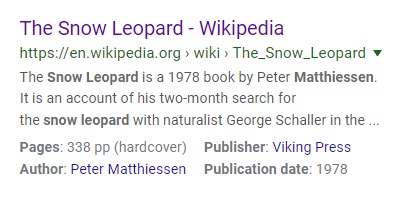Friday, November 8, 2019
The Secret Life of Peter Matthiessen
Saturday, April 5, 2014
Wednesday, March 15, 2023
For Storyholics: Distilled Fire Water
". . . The last of the river diamonds . . . .
bright alluvial diamonds,
burnished clean by mountain torrents,
green and blue and yellow and red.
In the darkness, he could feel them burning,
like fire and water of the universe, distilled."
— At Play in the Fields of the Lord ,
by Peter Matthiessen (Random House, 1965)
Related Log24 posts are now tagged Fire Water.
See as well, from posts tagged Heartland Sutra —
♫ "Red and Yellow, Blue and Green"
— "Prism Song," 1964
In Lieu of Ayahuasca

From this journal on Dec. 3, 2011 —

Some Weinberger-related art —
See as well the prose of Peter Matthiessen —

Friday, November 8, 2019
Perspective at the End
Wednesday, June 18, 2014
A Dark and Stormy Night
This journal on the morning of January 27, 2010,
the day of J. D. Salinger’s death, had a post on
Nietzsche and Heraclitus titled “To Apollo.”
Related material:
“… the wind was noisy the way it is in spooky movies
on the night the old slob with the will gets murdered.”
— From the opening sentence of the first Holden Caulfield
story, published in the Collier’s of December 22, 1945
See also Peter Matthiessen on Zen, Salinger and Vedanta,
and Heraclitus in this journal. Some background—
A quotation from Nietzsche…
(Sämtliche Werke, Kritische Studienausgabe in 15 Bänden (KSA).
Herausgegeben von Giorgio Colli und Mazzino Montinari.
Berlin: De Gruyter, 1980):
“Nietzsche wrote:
‘Seeing the world as a divine game and beyond good and evil:
in this both the Vedanta and Heraclitus are my predecessors.'”
— KSA vol. 11, page 26, as quoted by André van der Braak
in a chapter from his 2011 book Nietzsche and Zen
(Darin, dass die Welt ein göttliches Spiel sei
und jenseits von Gut und Böse —
habe ich die Vedanta-Philosophie
und Heraklit zum Vorgänger.)
Tuesday, June 17, 2014
The Plot Thickens
The previous two posts were on adman Julian Koenig,
who reportedly died on Thursday, June 12, 2014.
He was married twice, first to Aquila Connolly,
and later to Maria Eckhart. He has four children:
Pim, an artist; John, a businessman and
horseracing enthusiast; Antonia, a law student;
and Sarah, a producer for the public radio show
This American Life.
The Hotchkiss School on Peter Matthiessen ’45:
Mr. Matthiessen is survived by his wife, Maria Eckhart;
… two stepdaughters, Antonia and Sarah Koenig ….
See also Log24 posts referring to “Matthiessen.”
(These include references to one F. O. Matthiessen, who according
to the Guardian in 2002 was a cousin of Peter Matthiessen’s father.)
Thursday, September 30, 2010
Yonda* Lies** the Castle***
"…to seek one's true nature is, as one Zen master has said,
'a way to lead you to your long lost home.'"
— Peter Matthiessen, Nine-Headed Dragon River
See also Matthiessen in Dead Viking.

"It's a Barnum and Bailey world…"
* See Jazz Standards.
** "Just as phony as it can be"
*** A search for Jung and "the square inch space"
leads to March 15, 2009, and preceding posts.
Friday, September 10, 2010
Monday, October 31, 2005
Monday October 31, 2005
Balance

"An asymmetrical balance is sought since it possesses more movement. This is achieved by the imaginary plotting of the character upon a nine-fold square, invented by some ingenious writer of the Tang dynasty. If the square were divided in half or in four, the result would be symmetrical, but the nine-fold square permits balanced asymmetry."
— Chiang Yee, Chinese Calligraphy, quoted in Aspen no. 10, item 8
"'Burnt Norton' opens as a meditation on time. Many comparable and contrasting views are introduced. The lines are drenched with reminiscences of Heraclitus' fragments on flux and movement…. the chief contrast around which Eliot constructs this poem is that between the view of time as a mere continuum, and the difficult paradoxical Christian view of how man lives both 'in and out of time,' how he is immersed in the flux and yet can penetrate to the eternal by apprehending timeless existence within time and above it. But even for the Christian the moments of release from the pressures of the flux are rare, though they alone redeem the sad wastage of otherwise unillumined existence. Eliot recalls one such moment of peculiar poignance, a childhood moment in the rose-garden– a symbol he has previously used, in many variants, for the birth of desire. Its implications are intricate and even ambiguous, since they raise the whole problem of how to discriminate between supernatural vision and mere illusion. Other variations here on the theme of how time is conquered are more directly apprehensible. In dwelling on the extension of time into movement, Eliot takes up an image he had used in 'Triumphal March': 'at the still point of the turning world.' This notion of 'a mathematically pure point' (as Philip Wheelwright has called it) seems to be Eliot's poetic equivalent in our cosmology for Dante's 'unmoved Mover,' another way of symbolising a timeless release from the 'outer compulsions' of the world. Still another variation is the passage on the Chinese jar in the final section. Here Eliot, in a conception comparable to Wallace Stevens' 'Anecdote of the Jar,' has suggested how art conquers time:
Only by the form, the pattern,
Can words or music reach
The stillness, as a Chinese jar still
Moves perpetually in its stillness."
— F. O. Matthiessen, The Achievement of T.S. Eliot,
Oxford University Press, 1958, as quoted in On "Burnt Norton"
Friday, November 19, 2004
Friday November 19, 2004
From Tate to Plato
In honor of Allen Tate's birthday (today)
and of the MoMA re-opening (tomorrow)
"For Allen Tate the concept of tension was the most useful formal tool at the critic’s disposal, as irony and paradox were for Brooks. The principle of tension sustains the whole structure of meaning, and, as Tate declares in Tension in Poetry (1938), he derives it from lopping the prefixes off the logical terms extension and intension (which define the abstract and denotative aspect of the poetic language and, respectively, the concrete and connotative one). The meaning of the poem is 'the full organized body of all the extension and intension that we can find in it.' There is an infinite line between extreme extension and extreme intension and the readers select the meaning at the point they wish along that line, according to their personal drives, interests or approaches. Thus the Platonist will tend to stay near the extension end, for he is more interested in deriving an abstraction of the object into a universal…."
— from Form, Structure, and Structurality,
by Radu Surdulescu
"Eliot, in a conception comparable to Wallace Stevens' 'Anecdote of the Jar,' has suggested how art conquers time:
Only by the form, the pattern,
Can words or music reach
The stillness, as a Chinese jar still
Moves perpetually in its stillness."
— F. O. Matthiessen
in The Achievement of T.S. Eliot,
Oxford University Press, 1958
From Writing Chinese Characters:
"It is practical to think of a character centered within an imaginary square grid…. The grid can… be… subdivided, usually to 9 or 16 squares…."

These "Chinese jars"
(as opposed to their contents)
are as follows:

Various previous Log24.net entries have
dealt with the 3×3 "form" or "pattern"
(to use the terms of T. S. Eliot).
For the 4×4 form, see Poetry's Bones
and Geometry of the 4×4 Square.








